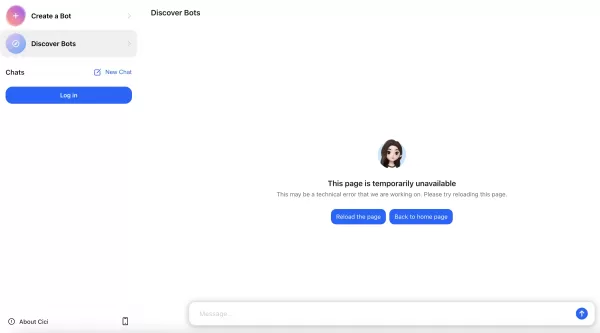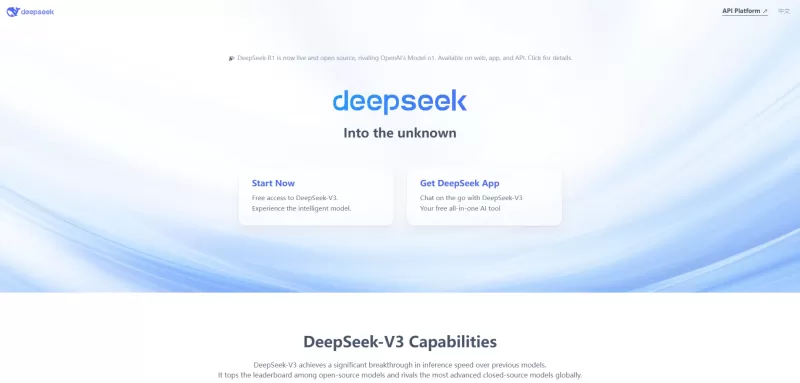AI-Driven Task Management: Revolutionizing Productivity in the Future
The world of task management is undergoing a significant transformation, thanks to the integration of artificial intelligence (AI). Gone are the days of relying solely on traditional methods; now, we're seeing a shift towards smarter, AI-driven systems that promise to enhance our workflows, increase productivity, and deliver personalized experiences. Let's dive into how AI is revolutionizing task management, with real-life examples and a peek into what the future holds.
Key Points
- AI is automating the grunt work of task management.
- Chat-based interfaces are becoming the norm in productivity apps.
- There's a growing focus on mindfulness and reflective practices within these apps.
- Personalized task management experiences are on the rise.
- AI helps with smarter task prioritization and allocation.
- The relevance of traditional interfaces is waning as AI takes center stage.
The AI Revolution in Task Management
How AI is Changing the Game
Artificial intelligence isn't just a buzzword anymore; it's reshaping our approach to task management in real time. By integrating AI into productivity tools, we're automating the tedious administrative tasks that used to eat up our time, allowing us to focus on more strategic and creative endeavors. AI algorithms can spot patterns, predict deadlines, and even suggest the best ways to organize our work, which leads to a noticeable boost in efficiency. It's not just about speed; it's about working smarter.
Terms like "AI Task Management," "Productivity Tools," and "Automation" are becoming more crucial as we all search for ways to streamline our workflows. AI-driven systems can prioritize tasks based on urgency and importance, ensuring that the most pressing items are tackled first. Plus, AI can smartly allocate tasks to team members, considering their skills, availability, and current workload.
Personalization is another big win with AI-powered task management. These systems learn from our habits and preferences, customizing the experience to fit our unique needs. They might suggest the best times for specific tasks, recommend tailored tools and resources, or even tweak the interface to suit our style. This level of customization can significantly boost engagement and satisfaction.
As AI technology advances, we're looking at even more sophisticated uses in task management. Picture AI assistants that can spot potential roadblocks before they happen, anticipate what resources we'll need, and even negotiate deadlines for us. The future of productivity is one where AI and humans work hand in hand, enhancing our abilities and helping us achieve more.
The Decline of Traditional Interfaces
One of the most striking changes in task management is the fading prominence of traditional user interfaces. In the past, productivity apps were all about visual layouts, drag-and-drop features, and complex menus. While these still have their place, they're increasingly being overshadowed by more intuitive, conversational approaches.

Chat-based interfaces are leading the charge in AI task management. Instead of clicking through menus, users can now simply chat with their task management system in plain language. This makes it easier to add tasks, set priorities, and manage resources. AI-powered chatbots can understand complex requests, offer useful suggestions, and even automate entire workflows.
This move towards conversational interfaces is fueled by advancements in natural language processing (NLP) technology. AI systems are now adept at understanding the subtleties of human language, enabling meaningful and productive interactions with machines. This isn't limited to text; voice-based interfaces are also on the rise, allowing hands-free task management.
The decline of traditional interfaces also ties into the growing emphasis on mindfulness and reflection in productivity apps. Rather than just checking tasks off a list, users are encouraged to pause, reflect on their progress, and focus on their well-being. AI can support this by prompting reflection, suggesting mindfulness exercises, and monitoring mood and stress levels.
Looking ahead, task management systems are set to become even more seamlessly integrated into our daily routines, providing assistance without being obtrusive. AI will be the driving force behind this shift, helping us manage tasks more effectively and achieve a better balance in life.
Runner H: An Example of AI-Powered Task Management
Exploring the Chat-Based Interface
Runner H stands out as a prime example of how AI is transforming task management. With its chat-based interface, users can interact with the system using natural language, making the process more intuitive and efficient.

The idea behind Runner H is to lessen the administrative load of task management. The AI system can analyze user input, pinpoint key tasks, set priorities, and allocate resources automatically. This frees up time for users to concentrate on strategic and creative tasks.
Imagine you're thinking about starting a local dog walking business. You type, "I want to start a local dog walking business," into Runner H, and it generates a to-do list that might include:
- Researching competitors
- Finding a domain name
- Setting up a website
Runner H can go further by offering relevant information, suggesting resources, and even automating certain processes. For example, it can search for available domain names, analyze competitor pricing, and generate website content.
This integration of AI can significantly enhance productivity and efficiency. By automating the tedious aspects of task management, Runner H empowers users to accomplish more in less time. Its chat-based interface makes it user-friendly, even for those less tech-savvy.
Using Runner H is straightforward, as shown in the video:
- Visit RunnerH.com.
- Enter your task or project idea in the chatbox.
- The AI will generate a list of steps and can help execute some of them.
- The AI identifies local competitors like Time For a Walk, NYC Pooch, Dotdot Percare, noting their average hourly rate for a dog walker is around $20.
- It checks domain name availability, like HappyPawsWalking.com.
- Click 'buy' to purchase the domain.
Users can then instruct the AI to continue executing tasks based on the recommended steps.
Analyzing the Impact on Task Management
Runner H marks a significant shift from traditional task management systems. Its chat-based interface and AI capabilities offer a more intuitive, efficient, and personalized experience. This change has several implications for the future of productivity:
- Reduced Administrative Burden: AI automates the tedious administrative tasks, freeing up time for strategic work.
- Enhanced Efficiency: AI algorithms analyze patterns, predict deadlines, and suggest optimal workflows.
- Personalized Experience: The system learns from user behavior to tailor the experience to individual needs.
- Increased Accessibility: Chat-based interfaces make task management accessible to a broader audience.
- Improved Collaboration: AI facilitates teamwork by allocating tasks and providing real-time updates.
As AI evolves, we can expect tools like Runner H to become even more sophisticated. Imagine AI assistants that can anticipate issues, predict resource needs, and negotiate deadlines. The future of productivity is one where AI and humans collaborate seamlessly, enhancing our capabilities and helping us achieve more.
The following table highlights the differences between traditional and AI-powered task management tools like Runner H:
Feature Traditional Task Management AI-Powered Task Management Interface Visual layouts, menus Chat-based, conversational Task Input Manual entry Natural language processing Prioritization Manual AI-driven Resource Allocation Manual AI-assisted Automation Limited Extensive Personalization Limited High
Getting Started with AI in Your Task Management
Practical Tips for Embracing AI
Integrating AI into your task management might seem overwhelming, but it doesn't have to be. Here are some practical tips to help you get started:
- Identify Pain Points: Start by pinpointing the most time-consuming or inefficient parts of your current task management process. This will help you focus on AI tools that can make the biggest impact.
- Explore Available Tools: Research the AI-powered task management tools on the market. Look for solutions that match your specific needs and goals, considering factors like ease of use, features, pricing, and integration capabilities.
- Start Small: Don't try to revolutionize your entire system at once. Begin by using AI in a limited way, like automating a single task or using an AI chatbot for basic inquiries. This gradual approach helps you get comfortable with the technology and gauge its effectiveness.
- Provide Feedback: AI systems learn from user feedback, so regularly share your thoughts on their performance. This will help improve the algorithms and deliver more accurate, relevant results over time.
- Embrace Experimentation: Be open to trying different AI tools and techniques. The field is constantly evolving, so staying updated and experimenting with new approaches is key.
- Invest in Training: If you're integrating AI into your business, ensure your employees are trained to use it effectively for task management.
By following these tips, you can smoothly integrate AI into your task management and enjoy the benefits of increased productivity, efficiency, and personalization.
Pricing Considerations for AI Task Management Tools
Understanding the Cost Factors
When evaluating AI-powered task management tools, it's crucial to understand the pricing structure and cost factors. These solutions often come with a higher price tag than traditional systems, but the potential return on investment can be significant.
- Subscription Model: Most AI task management tools operate on a subscription basis, with pricing based on the number of users, features, or data storage capacity. Carefully review the plans to choose one that fits your needs and budget.
- Feature-Based Pricing: Some tools offer tiered pricing based on the features included. This allows you to pay for the functionalities you need without unnecessary extras.
- Data Usage: AI algorithms require data to learn and improve, so some tools may charge based on the amount of data you process or store. Understand the data usage limits and associated costs before committing.
- Customization and Integration: Custom integrations or modifications might incur additional fees, depending on the complexity and the vendor's pricing policies.
- Free Trials: Many tools offer free trials or demo periods, allowing you to test the software before purchasing. Use these opportunities to compare features and pricing.
Also, consider the cost of training and implementation when calculating the total cost of ownership for an AI task management tool. Proper training and implementation are essential for maximizing the technology's benefits and ensuring a smooth transition.
Weighing the Advantages and Disadvantages of AI Task Management
Pros
- Increased productivity and efficiency
- Reduced administrative burden
- Personalized task management experience
- Improved collaboration
- Enhanced decision-making
Cons
- Potential cost
- Dependence on technology
- Data privacy concerns
- Risk of bias
- Job displacement
Essential Features of AI Task Management Tools
Key Capabilities to Look For
When choosing AI-powered task management tools, focus on the core features that will add the most value to your workflow. Here are some essential capabilities to consider:
- Natural Language Processing (NLP): Allows you to interact with the system using natural language, making task input, prioritization, and resource allocation easier.
- Machine Learning (ML): Analyzes patterns in your data to provide personalized workflow optimization recommendations.
- Predictive Analytics: Forecasts deadlines, anticipates resource needs, and identifies potential issues, helping you manage tasks proactively.
- Automation: Automates repetitive tasks like sending reminders, updating statuses, and generating reports, freeing up time for strategic work.
- Collaboration: Facilitates teamwork by allowing task sharing, progress tracking, and real-time communication with team members.
- Integration: Connects the AI tool with other applications you use, such as email, calendar, and CRM systems.
- Personalization: Tailors the task management experience to individual needs and preferences, boosting engagement and satisfaction.
- Reporting and Analytics: Provides insights into your task management performance, helping you identify areas for improvement and track progress over time.
By focusing on these core features, you can select an AI task management tool that truly transforms your productivity and efficiency.
Real-World Use Cases for AI Task Management
How Different Industries are Leveraging AI
AI task management is making waves across various industries, helping businesses and individuals streamline their workflows, boost productivity, and achieve their goals. Here are some real-world examples:
- Project Management: AI assists project managers in planning, scheduling, and tracking tasks to ensure projects stay on time and within budget.
- Customer Service: AI chatbots handle basic customer inquiries, allowing human agents to focus on more complex issues.
- Marketing: AI automates tasks like email marketing, social media posting, and lead generation, freeing marketers to focus on strategy and creativity.
- Sales: AI helps sales teams identify leads, prioritize prospects, and automate follow-up tasks, improving sales efficiency and conversion rates.
- Healthcare: AI helps manage patient appointments, track medication adherence, and automate administrative tasks, enhancing patient care and reducing costs.
- Education: AI personalizes learning experiences, provides automated feedback, and assists teachers in managing classroom tasks, boosting student engagement and outcomes.
- Software Development: AI automates testing, generates code, and identifies bugs, improving software quality and reducing development time.
These examples are just the tip of the iceberg. As AI technology continues to evolve, we can expect even more innovative applications to emerge in the future.
Frequently Asked Questions about AI Task Management
What is AI task management?
AI task management involves using artificial intelligence to automate, streamline, and enhance the process of managing tasks. AI algorithms can analyze patterns, predict deadlines, and suggest optimal workflows, leading to significant efficiency and productivity gains. This includes automating repetitive administrative tasks, using chat-based interfaces, incorporating reflective activities, and providing personalized experiences.
How can AI improve my productivity?
AI can boost productivity by automating administrative tasks, prioritizing tasks based on urgency and importance, allocating tasks to the most suitable team members, offering personalized recommendations for tools and resources, and even adjusting the interface to match your preferred style.
What are the key features of AI task management tools?
Key features include natural language processing (NLP), machine learning (ML), predictive analytics, automation, collaboration tools, integration capabilities, personalization features, and reporting and analytics tools.
What are some examples of AI task management tools?
Examples include Runner H and other emerging AI-powered productivity apps on the market.
Is AI task management expensive?
AI task management tools often come with a higher price tag than traditional systems, but the potential return on investment can be significant. It's important to carefully consider the pricing structure and cost factors, selecting a solution that aligns with your needs and budget.
Related Questions
How will AI impact the future of work?
AI is set to revolutionize the future of work, changing how we manage tasks, collaborate, and navigate our careers. As AI technology evolves, we can expect even more innovative applications, leading to increased productivity, efficiency, and personalization. One major impact will be the automation of routine tasks, freeing up time for more strategic and creative work. AI will also enhance collaboration by enabling real-time task sharing and communication across teams. Additionally, AI will offer personalized learning experiences to help workers develop new skills and adapt to changing job requirements. However, concerns about job displacement arise as AI takes over more tasks. It's crucial for workers to develop skills that AI can't easily replicate, like creativity and emotional intelligence. Governments and businesses must support a smooth transition to an AI-driven economy through retraining programs, education investment, and new policies. Overall, AI has the potential to transform the future of work positively, but addressing challenges like job displacement is essential to ensure all workers can benefit from this revolution.
Related article
 Effortlessly Chat with PDFs Using Gemini API, Langchain, and Chroma DB Integration
Transform your PDF documents into conversational partners with Retrieval-Augmented Generation (RAG) technology. This comprehensive guide demonstrates how to create an intelligent Python system that lets you interact with your PDFs using Gemini API's
Effortlessly Chat with PDFs Using Gemini API, Langchain, and Chroma DB Integration
Transform your PDF documents into conversational partners with Retrieval-Augmented Generation (RAG) technology. This comprehensive guide demonstrates how to create an intelligent Python system that lets you interact with your PDFs using Gemini API's
 Design Eye-Catching Coloring Book Covers Using Leonardo AI
Looking to design eye-catching coloring book covers that grab attention in Amazon's competitive KDP marketplace? Leonardo AI can help you create professional-grade, visually appealing covers that drive sales. Follow our expert techniques to craft stu
Design Eye-Catching Coloring Book Covers Using Leonardo AI
Looking to design eye-catching coloring book covers that grab attention in Amazon's competitive KDP marketplace? Leonardo AI can help you create professional-grade, visually appealing covers that drive sales. Follow our expert techniques to craft stu
 YouTube Integrates Veo 3 AI Video Tool Directly Into Shorts Platform
YouTube Shorts to Feature Veo 3 AI Video Model This SummerYouTube CEO Neal Mohan revealed during his Cannes Lions keynote that the platform's cutting-edge Veo 3 AI video generation technology will debut on YouTube Shorts later this summer. This follo
Comments (19)
0/200
YouTube Integrates Veo 3 AI Video Tool Directly Into Shorts Platform
YouTube Shorts to Feature Veo 3 AI Video Model This SummerYouTube CEO Neal Mohan revealed during his Cannes Lions keynote that the platform's cutting-edge Veo 3 AI video generation technology will debut on YouTube Shorts later this summer. This follo
Comments (19)
0/200
![EricMiller]() EricMiller
EricMiller
 August 27, 2025 at 9:01:29 PM EDT
August 27, 2025 at 9:01:29 PM EDT
This AI task management stuff sounds like a game-changer! I’m curious how it’ll handle my chaotic to-do lists. 😅 Hope it doesn’t outsmart me too much!


 0
0
![ArthurSanchez]() ArthurSanchez
ArthurSanchez
 August 13, 2025 at 7:00:59 AM EDT
August 13, 2025 at 7:00:59 AM EDT
This AI task management stuff sounds like a game-changer! Imagine my chaotic to-do list finally making sense. 😎 But, will it really understand my weird work habits or just push generic solutions?


 0
0
![ScottJackson]() ScottJackson
ScottJackson
 August 11, 2025 at 4:01:33 PM EDT
August 11, 2025 at 4:01:33 PM EDT
This AI task management stuff sounds like a game-changer! I’m curious how it’ll handle my chaotic to-do lists 😅. Hope it’s not just hype!


 0
0
![AvaPhillips]() AvaPhillips
AvaPhillips
 July 30, 2025 at 9:41:20 PM EDT
July 30, 2025 at 9:41:20 PM EDT
This AI task management stuff sounds like a game-changer! I'm curious how it handles chaotic schedules like mine. 😅 Anyone tried these systems yet?


 0
0
![AlbertThomas]() AlbertThomas
AlbertThomas
 April 25, 2025 at 9:48:04 PM EDT
April 25, 2025 at 9:48:04 PM EDT
A gestão de tarefas impulsionada por IA é um divisor de águas! É como ter um assistente pessoal que sabe exatamente o que eu preciso. O único ponto negativo é a curva de aprendizado, mas uma vez que você pega o jeito, é super eficiente. Vale muito a pena experimentar! 🚀


 0
0
![DouglasPerez]() DouglasPerez
DouglasPerez
 April 25, 2025 at 5:58:22 PM EDT
April 25, 2025 at 5:58:22 PM EDT
¡La gestión de tareas impulsada por IA es un cambio de juego! Es como tener un asistente personal que sabe exactamente lo que necesito. El único inconveniente es la curva de aprendizaje, pero una vez que le coges el truco, es súper eficiente. ¡Vale la pena probarlo! 🚀


 0
0
The world of task management is undergoing a significant transformation, thanks to the integration of artificial intelligence (AI). Gone are the days of relying solely on traditional methods; now, we're seeing a shift towards smarter, AI-driven systems that promise to enhance our workflows, increase productivity, and deliver personalized experiences. Let's dive into how AI is revolutionizing task management, with real-life examples and a peek into what the future holds.
Key Points
- AI is automating the grunt work of task management.
- Chat-based interfaces are becoming the norm in productivity apps.
- There's a growing focus on mindfulness and reflective practices within these apps.
- Personalized task management experiences are on the rise.
- AI helps with smarter task prioritization and allocation.
- The relevance of traditional interfaces is waning as AI takes center stage.
The AI Revolution in Task Management
How AI is Changing the Game
Artificial intelligence isn't just a buzzword anymore; it's reshaping our approach to task management in real time. By integrating AI into productivity tools, we're automating the tedious administrative tasks that used to eat up our time, allowing us to focus on more strategic and creative endeavors. AI algorithms can spot patterns, predict deadlines, and even suggest the best ways to organize our work, which leads to a noticeable boost in efficiency. It's not just about speed; it's about working smarter.
Terms like "AI Task Management," "Productivity Tools," and "Automation" are becoming more crucial as we all search for ways to streamline our workflows. AI-driven systems can prioritize tasks based on urgency and importance, ensuring that the most pressing items are tackled first. Plus, AI can smartly allocate tasks to team members, considering their skills, availability, and current workload.
Personalization is another big win with AI-powered task management. These systems learn from our habits and preferences, customizing the experience to fit our unique needs. They might suggest the best times for specific tasks, recommend tailored tools and resources, or even tweak the interface to suit our style. This level of customization can significantly boost engagement and satisfaction.
As AI technology advances, we're looking at even more sophisticated uses in task management. Picture AI assistants that can spot potential roadblocks before they happen, anticipate what resources we'll need, and even negotiate deadlines for us. The future of productivity is one where AI and humans work hand in hand, enhancing our abilities and helping us achieve more.
The Decline of Traditional Interfaces
One of the most striking changes in task management is the fading prominence of traditional user interfaces. In the past, productivity apps were all about visual layouts, drag-and-drop features, and complex menus. While these still have their place, they're increasingly being overshadowed by more intuitive, conversational approaches.

Chat-based interfaces are leading the charge in AI task management. Instead of clicking through menus, users can now simply chat with their task management system in plain language. This makes it easier to add tasks, set priorities, and manage resources. AI-powered chatbots can understand complex requests, offer useful suggestions, and even automate entire workflows.
This move towards conversational interfaces is fueled by advancements in natural language processing (NLP) technology. AI systems are now adept at understanding the subtleties of human language, enabling meaningful and productive interactions with machines. This isn't limited to text; voice-based interfaces are also on the rise, allowing hands-free task management.
The decline of traditional interfaces also ties into the growing emphasis on mindfulness and reflection in productivity apps. Rather than just checking tasks off a list, users are encouraged to pause, reflect on their progress, and focus on their well-being. AI can support this by prompting reflection, suggesting mindfulness exercises, and monitoring mood and stress levels.
Looking ahead, task management systems are set to become even more seamlessly integrated into our daily routines, providing assistance without being obtrusive. AI will be the driving force behind this shift, helping us manage tasks more effectively and achieve a better balance in life.
Runner H: An Example of AI-Powered Task Management
Exploring the Chat-Based Interface
Runner H stands out as a prime example of how AI is transforming task management. With its chat-based interface, users can interact with the system using natural language, making the process more intuitive and efficient.

The idea behind Runner H is to lessen the administrative load of task management. The AI system can analyze user input, pinpoint key tasks, set priorities, and allocate resources automatically. This frees up time for users to concentrate on strategic and creative tasks.
Imagine you're thinking about starting a local dog walking business. You type, "I want to start a local dog walking business," into Runner H, and it generates a to-do list that might include:
- Researching competitors
- Finding a domain name
- Setting up a website
Runner H can go further by offering relevant information, suggesting resources, and even automating certain processes. For example, it can search for available domain names, analyze competitor pricing, and generate website content.
This integration of AI can significantly enhance productivity and efficiency. By automating the tedious aspects of task management, Runner H empowers users to accomplish more in less time. Its chat-based interface makes it user-friendly, even for those less tech-savvy.
Using Runner H is straightforward, as shown in the video:
- Visit RunnerH.com.
- Enter your task or project idea in the chatbox.
- The AI will generate a list of steps and can help execute some of them.
- The AI identifies local competitors like Time For a Walk, NYC Pooch, Dotdot Percare, noting their average hourly rate for a dog walker is around $20.
- It checks domain name availability, like HappyPawsWalking.com.
- Click 'buy' to purchase the domain.
Users can then instruct the AI to continue executing tasks based on the recommended steps.
Analyzing the Impact on Task Management
Runner H marks a significant shift from traditional task management systems. Its chat-based interface and AI capabilities offer a more intuitive, efficient, and personalized experience. This change has several implications for the future of productivity:
- Reduced Administrative Burden: AI automates the tedious administrative tasks, freeing up time for strategic work.
- Enhanced Efficiency: AI algorithms analyze patterns, predict deadlines, and suggest optimal workflows.
- Personalized Experience: The system learns from user behavior to tailor the experience to individual needs.
- Increased Accessibility: Chat-based interfaces make task management accessible to a broader audience.
- Improved Collaboration: AI facilitates teamwork by allocating tasks and providing real-time updates.
As AI evolves, we can expect tools like Runner H to become even more sophisticated. Imagine AI assistants that can anticipate issues, predict resource needs, and negotiate deadlines. The future of productivity is one where AI and humans collaborate seamlessly, enhancing our capabilities and helping us achieve more.
The following table highlights the differences between traditional and AI-powered task management tools like Runner H:
| Feature | Traditional Task Management | AI-Powered Task Management |
|---|---|---|
| Interface | Visual layouts, menus | Chat-based, conversational |
| Task Input | Manual entry | Natural language processing |
| Prioritization | Manual | AI-driven |
| Resource Allocation | Manual | AI-assisted |
| Automation | Limited | Extensive |
| Personalization | Limited | High |
Getting Started with AI in Your Task Management
Practical Tips for Embracing AI
Integrating AI into your task management might seem overwhelming, but it doesn't have to be. Here are some practical tips to help you get started:
- Identify Pain Points: Start by pinpointing the most time-consuming or inefficient parts of your current task management process. This will help you focus on AI tools that can make the biggest impact.
- Explore Available Tools: Research the AI-powered task management tools on the market. Look for solutions that match your specific needs and goals, considering factors like ease of use, features, pricing, and integration capabilities.
- Start Small: Don't try to revolutionize your entire system at once. Begin by using AI in a limited way, like automating a single task or using an AI chatbot for basic inquiries. This gradual approach helps you get comfortable with the technology and gauge its effectiveness.
- Provide Feedback: AI systems learn from user feedback, so regularly share your thoughts on their performance. This will help improve the algorithms and deliver more accurate, relevant results over time.
- Embrace Experimentation: Be open to trying different AI tools and techniques. The field is constantly evolving, so staying updated and experimenting with new approaches is key.
- Invest in Training: If you're integrating AI into your business, ensure your employees are trained to use it effectively for task management.
By following these tips, you can smoothly integrate AI into your task management and enjoy the benefits of increased productivity, efficiency, and personalization.
Pricing Considerations for AI Task Management Tools
Understanding the Cost Factors
When evaluating AI-powered task management tools, it's crucial to understand the pricing structure and cost factors. These solutions often come with a higher price tag than traditional systems, but the potential return on investment can be significant.
- Subscription Model: Most AI task management tools operate on a subscription basis, with pricing based on the number of users, features, or data storage capacity. Carefully review the plans to choose one that fits your needs and budget.
- Feature-Based Pricing: Some tools offer tiered pricing based on the features included. This allows you to pay for the functionalities you need without unnecessary extras.
- Data Usage: AI algorithms require data to learn and improve, so some tools may charge based on the amount of data you process or store. Understand the data usage limits and associated costs before committing.
- Customization and Integration: Custom integrations or modifications might incur additional fees, depending on the complexity and the vendor's pricing policies.
- Free Trials: Many tools offer free trials or demo periods, allowing you to test the software before purchasing. Use these opportunities to compare features and pricing.
Also, consider the cost of training and implementation when calculating the total cost of ownership for an AI task management tool. Proper training and implementation are essential for maximizing the technology's benefits and ensuring a smooth transition.
Weighing the Advantages and Disadvantages of AI Task Management
Pros
- Increased productivity and efficiency
- Reduced administrative burden
- Personalized task management experience
- Improved collaboration
- Enhanced decision-making
Cons
- Potential cost
- Dependence on technology
- Data privacy concerns
- Risk of bias
- Job displacement
Essential Features of AI Task Management Tools
Key Capabilities to Look For
When choosing AI-powered task management tools, focus on the core features that will add the most value to your workflow. Here are some essential capabilities to consider:
- Natural Language Processing (NLP): Allows you to interact with the system using natural language, making task input, prioritization, and resource allocation easier.
- Machine Learning (ML): Analyzes patterns in your data to provide personalized workflow optimization recommendations.
- Predictive Analytics: Forecasts deadlines, anticipates resource needs, and identifies potential issues, helping you manage tasks proactively.
- Automation: Automates repetitive tasks like sending reminders, updating statuses, and generating reports, freeing up time for strategic work.
- Collaboration: Facilitates teamwork by allowing task sharing, progress tracking, and real-time communication with team members.
- Integration: Connects the AI tool with other applications you use, such as email, calendar, and CRM systems.
- Personalization: Tailors the task management experience to individual needs and preferences, boosting engagement and satisfaction.
- Reporting and Analytics: Provides insights into your task management performance, helping you identify areas for improvement and track progress over time.
By focusing on these core features, you can select an AI task management tool that truly transforms your productivity and efficiency.
Real-World Use Cases for AI Task Management
How Different Industries are Leveraging AI
AI task management is making waves across various industries, helping businesses and individuals streamline their workflows, boost productivity, and achieve their goals. Here are some real-world examples:
- Project Management: AI assists project managers in planning, scheduling, and tracking tasks to ensure projects stay on time and within budget.
- Customer Service: AI chatbots handle basic customer inquiries, allowing human agents to focus on more complex issues.
- Marketing: AI automates tasks like email marketing, social media posting, and lead generation, freeing marketers to focus on strategy and creativity.
- Sales: AI helps sales teams identify leads, prioritize prospects, and automate follow-up tasks, improving sales efficiency and conversion rates.
- Healthcare: AI helps manage patient appointments, track medication adherence, and automate administrative tasks, enhancing patient care and reducing costs.
- Education: AI personalizes learning experiences, provides automated feedback, and assists teachers in managing classroom tasks, boosting student engagement and outcomes.
- Software Development: AI automates testing, generates code, and identifies bugs, improving software quality and reducing development time.
These examples are just the tip of the iceberg. As AI technology continues to evolve, we can expect even more innovative applications to emerge in the future.
Frequently Asked Questions about AI Task Management
What is AI task management?
AI task management involves using artificial intelligence to automate, streamline, and enhance the process of managing tasks. AI algorithms can analyze patterns, predict deadlines, and suggest optimal workflows, leading to significant efficiency and productivity gains. This includes automating repetitive administrative tasks, using chat-based interfaces, incorporating reflective activities, and providing personalized experiences.
How can AI improve my productivity?
AI can boost productivity by automating administrative tasks, prioritizing tasks based on urgency and importance, allocating tasks to the most suitable team members, offering personalized recommendations for tools and resources, and even adjusting the interface to match your preferred style.
What are the key features of AI task management tools?
Key features include natural language processing (NLP), machine learning (ML), predictive analytics, automation, collaboration tools, integration capabilities, personalization features, and reporting and analytics tools.
What are some examples of AI task management tools?
Examples include Runner H and other emerging AI-powered productivity apps on the market.
Is AI task management expensive?
AI task management tools often come with a higher price tag than traditional systems, but the potential return on investment can be significant. It's important to carefully consider the pricing structure and cost factors, selecting a solution that aligns with your needs and budget.
Related Questions
How will AI impact the future of work?
AI is set to revolutionize the future of work, changing how we manage tasks, collaborate, and navigate our careers. As AI technology evolves, we can expect even more innovative applications, leading to increased productivity, efficiency, and personalization. One major impact will be the automation of routine tasks, freeing up time for more strategic and creative work. AI will also enhance collaboration by enabling real-time task sharing and communication across teams. Additionally, AI will offer personalized learning experiences to help workers develop new skills and adapt to changing job requirements. However, concerns about job displacement arise as AI takes over more tasks. It's crucial for workers to develop skills that AI can't easily replicate, like creativity and emotional intelligence. Governments and businesses must support a smooth transition to an AI-driven economy through retraining programs, education investment, and new policies. Overall, AI has the potential to transform the future of work positively, but addressing challenges like job displacement is essential to ensure all workers can benefit from this revolution.
 Effortlessly Chat with PDFs Using Gemini API, Langchain, and Chroma DB Integration
Transform your PDF documents into conversational partners with Retrieval-Augmented Generation (RAG) technology. This comprehensive guide demonstrates how to create an intelligent Python system that lets you interact with your PDFs using Gemini API's
Effortlessly Chat with PDFs Using Gemini API, Langchain, and Chroma DB Integration
Transform your PDF documents into conversational partners with Retrieval-Augmented Generation (RAG) technology. This comprehensive guide demonstrates how to create an intelligent Python system that lets you interact with your PDFs using Gemini API's
 Design Eye-Catching Coloring Book Covers Using Leonardo AI
Looking to design eye-catching coloring book covers that grab attention in Amazon's competitive KDP marketplace? Leonardo AI can help you create professional-grade, visually appealing covers that drive sales. Follow our expert techniques to craft stu
Design Eye-Catching Coloring Book Covers Using Leonardo AI
Looking to design eye-catching coloring book covers that grab attention in Amazon's competitive KDP marketplace? Leonardo AI can help you create professional-grade, visually appealing covers that drive sales. Follow our expert techniques to craft stu
 YouTube Integrates Veo 3 AI Video Tool Directly Into Shorts Platform
YouTube Shorts to Feature Veo 3 AI Video Model This SummerYouTube CEO Neal Mohan revealed during his Cannes Lions keynote that the platform's cutting-edge Veo 3 AI video generation technology will debut on YouTube Shorts later this summer. This follo
YouTube Integrates Veo 3 AI Video Tool Directly Into Shorts Platform
YouTube Shorts to Feature Veo 3 AI Video Model This SummerYouTube CEO Neal Mohan revealed during his Cannes Lions keynote that the platform's cutting-edge Veo 3 AI video generation technology will debut on YouTube Shorts later this summer. This follo
 August 27, 2025 at 9:01:29 PM EDT
August 27, 2025 at 9:01:29 PM EDT
This AI task management stuff sounds like a game-changer! I’m curious how it’ll handle my chaotic to-do lists. 😅 Hope it doesn’t outsmart me too much!


 0
0
 August 13, 2025 at 7:00:59 AM EDT
August 13, 2025 at 7:00:59 AM EDT
This AI task management stuff sounds like a game-changer! Imagine my chaotic to-do list finally making sense. 😎 But, will it really understand my weird work habits or just push generic solutions?


 0
0
 August 11, 2025 at 4:01:33 PM EDT
August 11, 2025 at 4:01:33 PM EDT
This AI task management stuff sounds like a game-changer! I’m curious how it’ll handle my chaotic to-do lists 😅. Hope it’s not just hype!


 0
0
 July 30, 2025 at 9:41:20 PM EDT
July 30, 2025 at 9:41:20 PM EDT
This AI task management stuff sounds like a game-changer! I'm curious how it handles chaotic schedules like mine. 😅 Anyone tried these systems yet?


 0
0
 April 25, 2025 at 9:48:04 PM EDT
April 25, 2025 at 9:48:04 PM EDT
A gestão de tarefas impulsionada por IA é um divisor de águas! É como ter um assistente pessoal que sabe exatamente o que eu preciso. O único ponto negativo é a curva de aprendizado, mas uma vez que você pega o jeito, é super eficiente. Vale muito a pena experimentar! 🚀


 0
0
 April 25, 2025 at 5:58:22 PM EDT
April 25, 2025 at 5:58:22 PM EDT
¡La gestión de tareas impulsada por IA es un cambio de juego! Es como tener un asistente personal que sabe exactamente lo que necesito. El único inconveniente es la curva de aprendizaje, pero una vez que le coges el truco, es súper eficiente. ¡Vale la pena probarlo! 🚀


 0
0





























